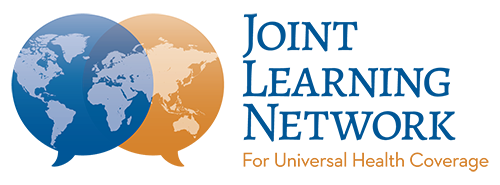The Vital Role Provider Payment Mechanisms Play in Pandemic Preparedness
This post originally appeared on the Results for Development blog.
Amid the backdrop of uncertainty that the COVID-19 pandemic has sewn, policymakers, health system managers and frontline providers are working tirelessly to slow the spread of illness, effectively treat those who have been diagnosed and do what they can to protect broader social systems during lockdown.
Responsiveness to evolving health and social conditions is paramount. And it is also important to reflect on what this pandemic is telling us about the systems we have in place, and to learn from our experiences — and the experiences of others — about how we can simultaneously respond to shifting health needs during a crisis and ensure our systems are better positioned to respond to future public health emergencies.
On April 22, the Joint Learning Network’s Primary Health Care Financing and Payment collaborative did just that.
This group of peers — comprising members from over 20 countries — gathered virtually to discuss how member countries were responding to COVID-19, share emerging lessons from their work and hear key insights from those at different stages of pandemic response. Three member countries shared presentations: delegations from China and South Korea discussed their experiences identifying the virus early on and implementing a response that minimized spread. A team from Liberia also presented on how the 2014 Ebola epidemic had prepared their country to better respond to COVID-19, highlighting the value of preparedness and learning from past tragedies that all countries should keep in mind.
In each presentation, the importance of primary health care and frontline providers in managing pandemic preparedness and response was clear. Hospitals play an essential role in managing severe cases of COVID-19, but, in the wake of this crisis, as primary health care facilities play a vital role in mitigating the spread of contagion and further hospitalizations.
The discussion coalesced around three key themes from presentations, where participants felt the most broadly applicable learnings were focused.
Here are the key takeaways from the group:
- Frontline providers need readily available information, support and resources to rapidly respond to high levels of infection and to prevent further spread. Country representatives emphasized that access to needed resources is pivotal in enhance the ability of frontline providers to respond. This lesson was highlighted well by China’s experience, where a tiered response and prevention approach provided tailored guidance and resources for low, medium, and high-risk areas, respectively. The central coordination of these prevention and response protocols—developed by a team of national experts—was coupled with enhanced funding allocation and range flexible, virtual, tracking and reporting mechanisms. The result was the strengthening avenues for rapid, bi-directional sharing of information, that was appropriate for the evolving needs of each region.
- Reduce financial barriers for patients seeking care and increase financial incentives for providers to conduct early detection, diagnosis and case management. While free treatment policies can ease public concern about the implications of seeking treatment, issuing assurances to providers that their increased caseloads will be appropriately compensated can be just as important. Both China and South Korea shared detailed plans implemented to eliminate any financial burdens associated with testing or case management. Importantly, these measures were matched by provider incentives—such as per-person, per-day premiums for working with COVID-19 patients—that ensured these patients would be cared for promptly. Moreover, these measures were matched by guaranteed, paid rest-time that providers could count on to avoid feelings of burn out amidst increased demand for services. Matching demand-side assurances with supply-side incentives enhanced system responsiveness and allowed China and South Korea to more effectively identify and track emerging cases.
- This isn’t the first epidemic and it won’t be the last. During the 2014 Ebola epidemic, the Liberian health system leveraged strong community engagement structures to bolster awareness and ensure timely referrals were made. As the country began to prepare for COVID-19, these systems were reactivated, along with contact tracing and active case-finding teams. Liberia also shared that much of the strong community response—including engagement from local leaders to build awareness and support prevention efforts—was overwhelmingly voluntary, indicating that in the aftermath of the Ebola pandemic, members of the population were both motivated and empowered to reduce the spread of disease in their communities. The presentation from Liberia highlighted the important fact that in a globalized world, the potential for disease to spread is greatly increased. And yet, the presentation also conveyed an important message: the measures we take now to respond to this pandemic — and the way we think about health system strengthening going forward — will help prepare us for any new challenges that may arise.
As countries transition to the next phases of their COVID-19 response, the role of primary health care will be crucial. Continuous care that is accessible, appropriate to the needs of the patient and community, and well-integrated into the broader health system will be key to responding rapidly to emerging hotspots and controlling the spread. Investing in resilient PHC systems will not only help us weather the ongoing crisis — it will better position these systems to adapt and respond to whatever new challenges we face.
